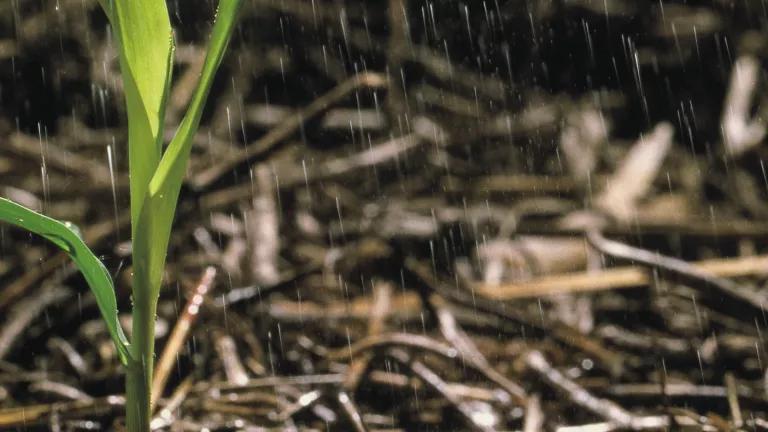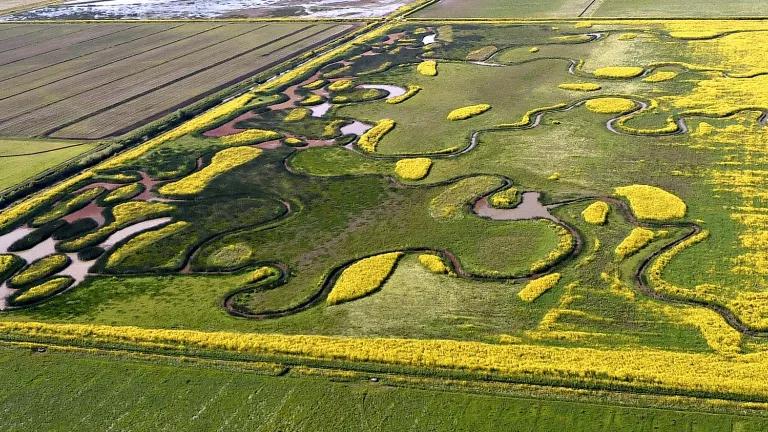
Rather than planning for droughts and ensuring that minimum water quality objectives are achieved in critically dry years, the proposed voluntary agreement appears to be a “plan to fail” to protect the Delta in future droughts.
Droughts are a fact of life in California, even as climate change is making them worse. The Governor’s Water Resilience Portfolio recognizes the need to improve drought preparedness, requiring that the State to be able to protect fish and wildlife during a six year drought (recommendation 26.3). That recommendation is crucial because instead of being prepared for droughts and ensuring that water quality objectives that protect fish and wildlife are met, the State’s current “plan” for droughts is to declare an emergency and violate minimum water quality standards, devastating native fish and wildlife — and the thousands of jobs that depend on their health. The Bureau of Reclamation currently estimates that 70% of the eggs laid by endangered winter-run Chinook salmon this year will be killed by lethal water temperatures below Shasta Dam (compared to 75% killed last year), and DWR and Reclamation are currently violating the minimum Delta water quality standards that protect farms, cities, and the environment in the Delta, reducing flows through the Delta below the minimum levels that scientists have repeatedly found are inadequate.
The State Water Board’s update of the Bay-Delta Plan is intended to help ensure that water quality objectives would be achieved during droughts. As the State Water Board’s 2018 Framework for updating the Bay-Delta Plan explains,
The current Bay-Delta Plan is implemented by a limited subset of water users, on a limited subset of streams, for only parts of the year. Implementation of the current Bay-Delta Plan has failed to protect fish and wildlife that require protection throughout the watershed and throughout the year.
Under water rights orders that implement the current water quality plan (known as D-1641), the CVP and SWP are responsible for meeting Delta water quality objectives. However, the CVP and SWP have violated these standards in 2014, 2015, 2016, 2021, and 2022 – five of the last nine years, and every critically dry year since 2013. One of the benefits of the Bay-Delta Plan update is that all water rights holders would be subject to meeting updated standards, and no water users would be above the law.
Yet the proposed voluntary agreement would simply reinforce and lock in the current system, resulting in water quality objectives being routinely violated in future droughts. While the VA proposes to “add” 155,000 acre feet per year of additional outflow in critically dry years, simply meeting existing water quality objectives in those years will require far more water. The State has estimated that approval of Temporary Urgency Change Petitions (TUCPs) reduced Delta outflow by far more than this amount in recent years:
- 2014: more than 450,000 acre feet
- 2015: 910,000 acre feet
- 2021: 289,000 acre feet
- 2022: more than 616,000 acre feet (preliminary estimate for the months of April to June, based on DWR’s estimated outflow with and without the TUCP. Additional TUCPs later this year would increase this estimate).
Moreover, after accounting for the fact that the voluntary agreement proposes to add water to the Trump Administration’s blatantly unlawful biological opinions, the voluntary agreement would reduce Delta outflow in critically dry years compared to the environmental regulations in place from 2008 to 2019.
And when it comes to planning for droughts, meeting minimum instream flows in the Delta (including Delta outflow) is only half of the problem: there is also a critical need to reduce water diversions in order to increase the amount of cold water stored behind reservoirs to meet upstream water temperature objectives that protect salmon. This was explicitly part of the State Water Board’s unfinished update of the Bay-Delta Plan. The failure to reduce water diversions last year resulted in extremely low reservoir storage and disastrous temperature-dependent mortality of endangered salmon last year, and because California didn’t get bailed out by an extremely wet year this winter, we’re repeating the disaster again this year. Things are so bad this year that the Sacramento River Settlement Contractors are finally having to reduce their water diversions by hundreds of thousands of acre feet this year.
Yet the proposed voluntary agreement does not establish minimum Shasta Reservoir storage or temperature requirements to protect salmon. And under the voluntary agreement, the Sacramento River Settlement Contractors (maximum contract amount of more than 2.1 million acre feet) would only give up 2,000 acre feet of water in critically dry years – even less water than water users on Putah Creek, far less than their reduced diversions this year, and woefully short of what is needed to protect salmon below Shasta Dam in future droughts.
The Trump Administration’s biological opinions not only weakened and eliminated protections in the Delta, but they also eliminated storage and temperature protections for salmon below Shasta Dam. Those biological opinions are a plan for extinction in the Bay-Delta, which we’re watching in real time during the drought. Yet as Tom Birmingham, General Manager of the Westlands Water District, said at the April 19, 2022 meeting of the Board of Directors of the Westlands Water District,
“the operations that are assumed in the voluntary agreements include the operational flexibility incorporated into the 2019 biological opinions…. So again, if the wheels come off the bus and the new biological opinions look dramatically different, then there won’t be a voluntary agreement.”
(this exchange starts around the 1:23 mark of this video, or see this summary from WaterWrights). Instead of fixing the problems in the Trump Administration’s biological opinions, including Shasta reservoir management during droughts, the voluntary agreement assumes continuation of this plan for extinction.
The only thing worse than failing to plan for droughts is planning to fail. Under California law, it is unlawful for TUCPs to be used to violate minimum water quality standards, but Governor Newsom’s emergency drought declaration has suspended this provision of state law (Cal. Water Code § 13247) in order to legalize the water projects’ violation of the law and their obligations to the public. Rather than fixing these problems and ensuring that minimum water quality objectives that protect farms, cities and the environment are implemented in droughts, the proposed voluntary agreement would reinforce this practice of breaking the rules to benefit the politically powerful at the expense of the environment, Native American Tribes, fishing jobs, and disadvantaged communities in the Delta.


